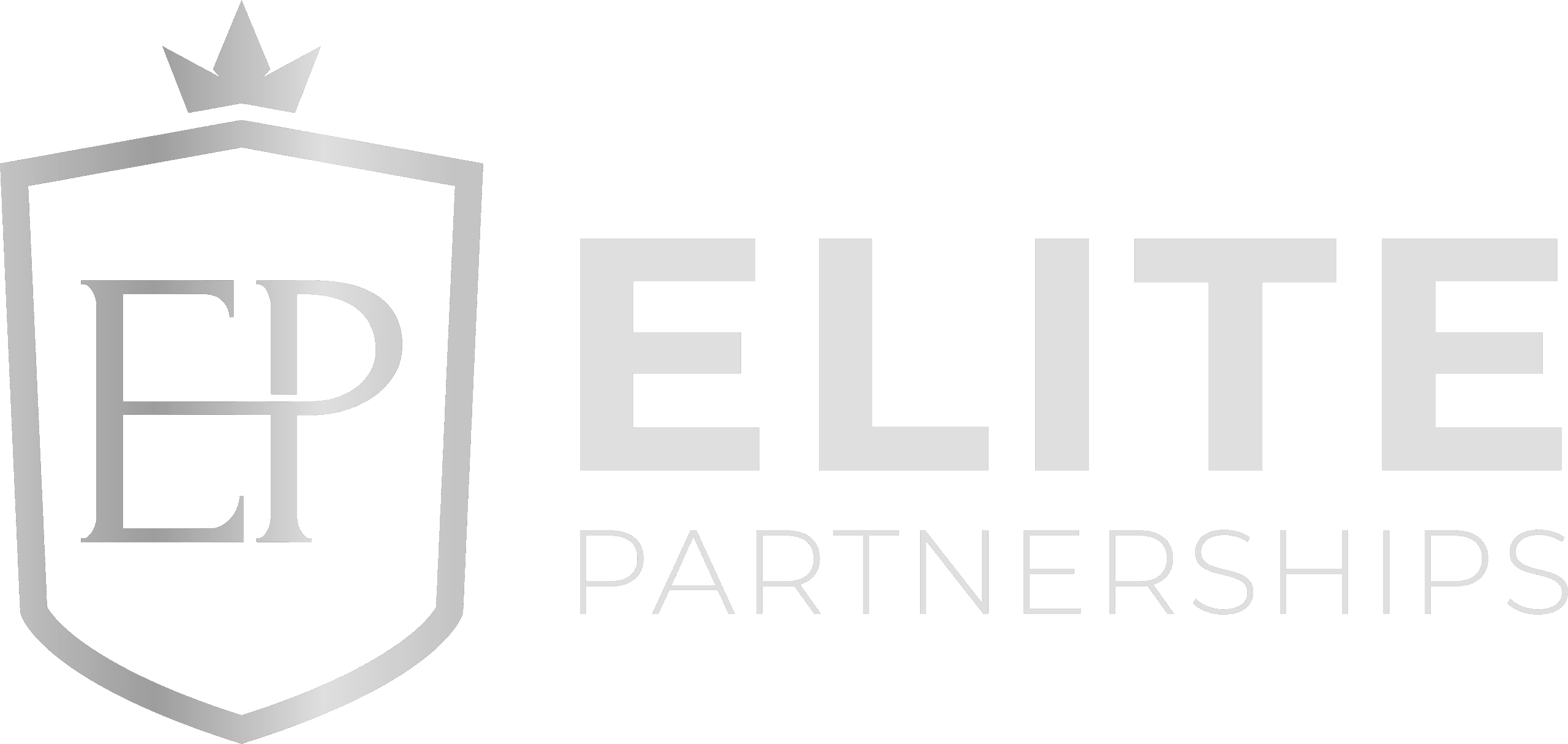In today’s crowded and fast-moving marketplace, businesses need more than visibility—they need action. That’s where conversion-driven campaigns come in. These are strategies built not just to attract attention but to prompt meaningful responses, such as sign-ups, inquiries, or purchases.
At Elite Partnerships, we believe every campaign should move the needle, and that starts with intentional design and execution.
This guide explores how to build campaigns that actually convert, especially for community-driven businesses and in-demand consumer services looking for more than passive impressions.
Understanding What “Conversion” Really Means
At its core, a conversion is when a potential customer takes a desired action. But what counts as a conversion will vary depending on the goal:
- A product-based business might aim for purchases.
- A service provider may seek consultation bookings.
- A brand launching in a new area might want email sign-ups or event RSVPs.
Before building the campaign, clarify exactly what action you’re trying to inspire. Every message, image, and offer should work toward that goal.
Laying the Foundation: Know Your Audience Deeply
Designing for conversion starts with insight. You need to know not just who your audience is—but how they think, decide, and act.
Ask yourself:
- What problems do they need solved right now?
- What objections or hesitations might they have?
- What channels or touchpoints do they trust most?
For community-driven businesses, this insight often comes from grassroots-level interactions—listening in real time, gathering feedback, and observing buying behaviour.
The Anatomy of a Conversion-Driven Campaign
Successful campaigns share several key traits. Here’s what to build into your next strategy:
1. A Clear, Compelling Offer
Your offer should be simple, valuable, and directly tied to the audience’s needs. This could be a free trial, a limited-time discount, or an exclusive consultation.
An effective offer should also create a sense of urgency. Adding time-sensitive language like “limited availability” or “only this weekend” can encourage immediate action.
Make sure the value is crystal clear—customers should instantly understand what they’re getting and why it matters to them. Avoid jargon or over-explaining; clarity beats cleverness when it comes to conversion.
2. A Strong Call-to-Action (CTA)
A vague or weak CTA stalls momentum. Instead of “Learn More,” try “Reserve Your Spot” or “Get Your Free Quote.” Make the next step easy and appealing.
The CTA should appear at multiple touchpoints—on signage, in conversation, and across follow-up communications. Visual cues like bold buttons or directional graphics can guide attention, while verbal cues from sales reps should be consistent and confident.
A well-placed CTA reinforces the desired action and ensures there’s no ambiguity about what the customer should do next.
3. Consistent, Focused Messaging
Avoid diluting the campaign with unrelated promotions. Stay focused on one goal and craft every message to reinforce it.
Consistency also builds brand trust. When your tone, visuals, and language align across all platforms—flyers, booth displays, conversations, and follow-up emails—it signals professionalism and attention to detail.
4. Frictionless Experience
From the moment someone engages with your campaign, the path to conversion should be smooth. Remove unnecessary steps or form fields. Speed matters.
Every unnecessary step increases the chance of drop-off. Ensure forms are mobile-friendly, signage is clear, and staff can quickly answer questions or complete transactions.
Consider offering multiple ways to take action to meet customers where they are and remove all unnecessary barriers. These can include QR codes, one-click sign-ups, or instant scheduling.
5. Measurable Goals and Benchmarks
Know how you’ll define success. Are you tracking clicks, appointments, or in-person conversations? Set KPIs from the beginning.
Tracking should begin from day one. Use tools like lead capture forms, follow-up call logs, and feedback surveys to gather data on customer behavior.
Analyze what’s working and what’s not in real time so you can adjust tactics mid-campaign if needed. Benchmarking against past campaigns also provides valuable context for performance and improvement.
Bringing Campaigns to Life: Field-Level Execution
For brands that engage customers in real life—through events, pop-ups, or community presence—conversion happens at the point of interaction. This is especially true for in-demand consumer services where trust and immediacy are critical.
Field-level brand interaction allows you to:
- Present the offer in context (e.g., showing a telecom solution where connection problems happen)
- Respond to questions and objections on the spot
- Capture interest while it’s fresh
This model ensures campaigns don’t live only online—they become part of daily life for customers, making the message tangible and actionable.
Real-Time Sales Outreach: Driving Immediate Action
One of the most powerful tools in a conversion campaign is speed. Real-time sales outreach—connecting with prospects in the moment—removes the lag between interest and decision-making.
When representatives are trained to pivot quickly, answer questions, and highlight key benefits, they reduce hesitation. Whether it’s responding to leads from an event or following up on an interest form within minutes, timing can make or break the outcome.
Tailoring Your Campaign to Your Community
Community-driven businesses thrive on authenticity. Conversion campaigns in this space should reflect the values, language, and rhythm of the audience they serve.
Localize your approach:
- Feature testimonials from neighbourhood customers
- Tie the offer to a known event or local challenge
- Include community visuals in printed or digital materials
This relevance increases emotional connection, and conversions follow.
Training Your Team for Frontline Execution
Even the best campaign ideas fall flat without strong delivery. Your frontline representatives must not only understand the product but also be able to present it persuasively.
Skills to prioritize:
- Reading and adapting to customer signals
- Handling objections with confidence
- Keeping energy high across multiple conversations
- Delivering the CTA clearly and with urgency
Conversion-driven campaigns are about moments, and your team needs to be ready to own them.
Measuring What Matters
Once your campaign is live, tracking the right metrics will help you optimize for greater success. Go beyond surface-level vanity metrics and focus on outcomes:
- Lead-to-close ratio: Of all the people you engaged, how many took action?
- Time to conversion: How long does it take someone to decide?
- Drop-off points: Where are you losing people—at the pitch, the form, or the follow-up?
A company should track and refine these details to ensure every campaign is learning-based and growth-focused.
A Real-World Example: Local Utility Rollout
One recent campaign involved promoting a new utility service in a mid-sized British Columbia community. By pairing field-level interactions with personalized outreach, the team:
- Engaged over 1,000 residents through local pop-ups
- Collected 300+ qualified leads
- Converted 45% within three weeks
The success wasn’t just in the numbers—it was in the community conversations that built trust and the clear pathway that helped people act quickly.
Conversion-Driven Campaigns Create Real Business Momentum
When designed thoughtfully, conversion-driven campaigns do more than make noise—they create traction. They build trust, highlight value, and make it easy for people to say yes.
Elite Partnerships helps clients across British Columbia craft and execute these campaigns with focus, energy, and strategic discipline. Whether you serve a niche market or a growing local audience, the opportunity to convert attention into action is within reach.
If you’re ready to bring your next campaign to life, contact our team to help you build something that delivers real results, one conversion at a time.

